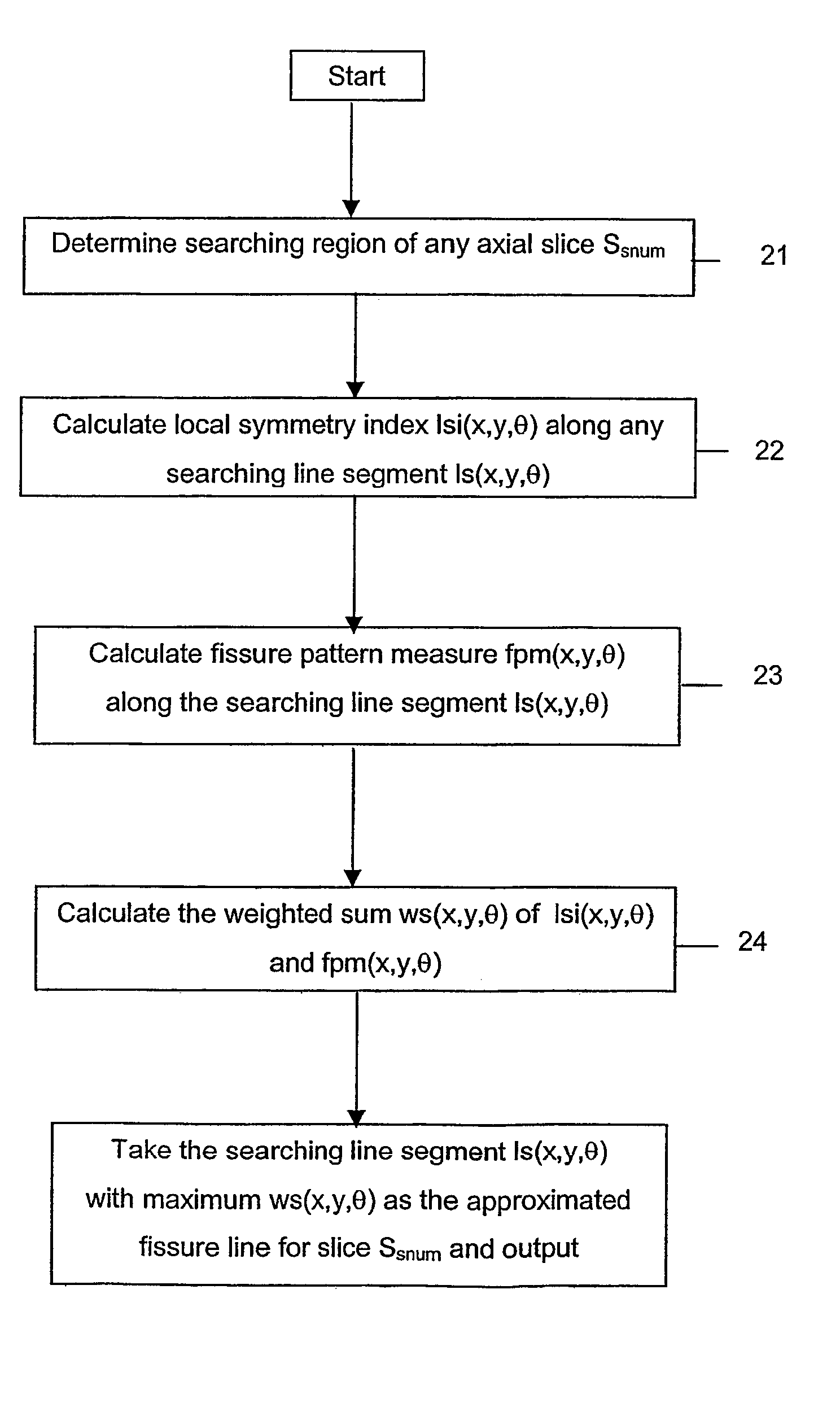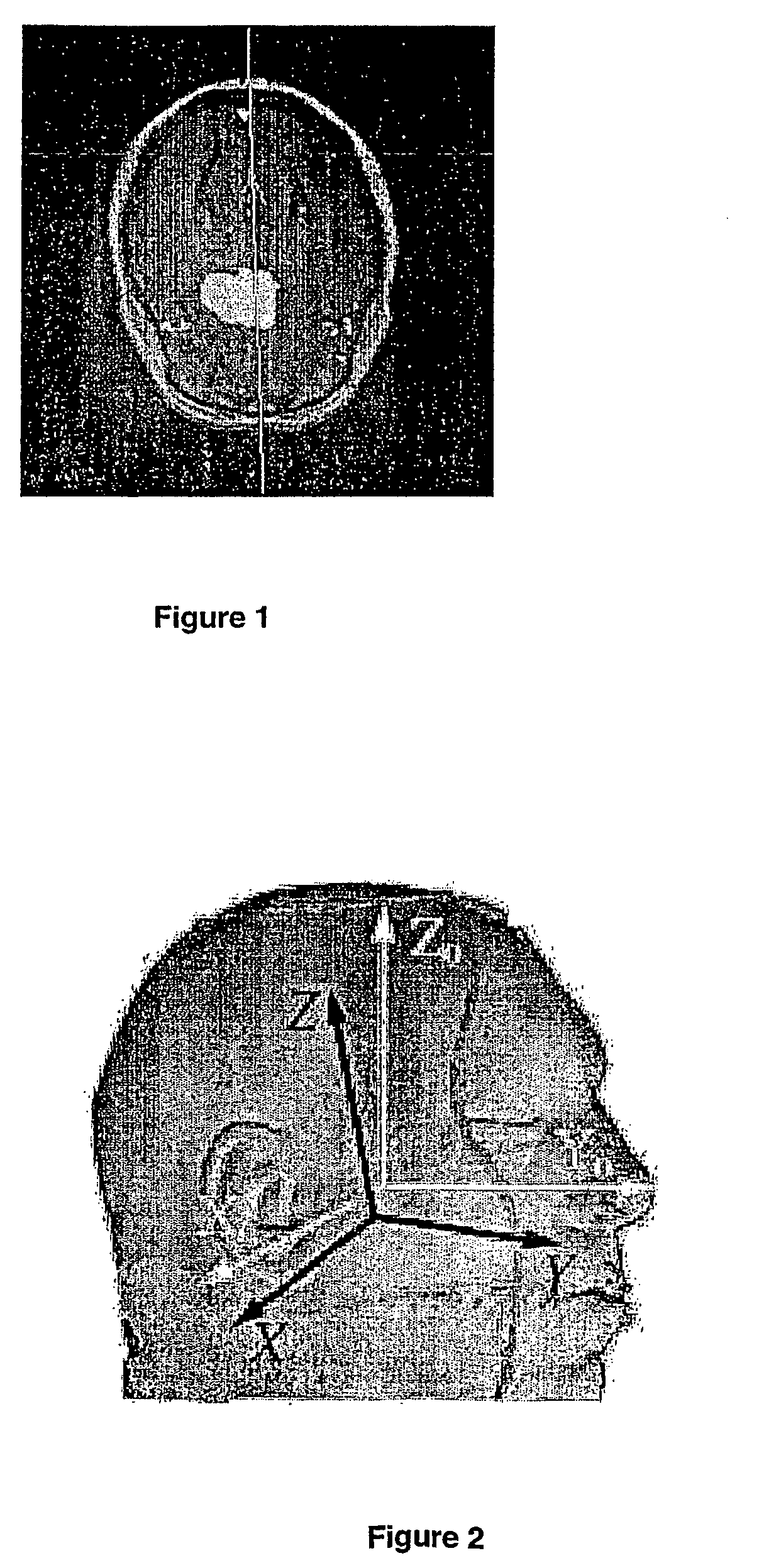Method and apparatus for determining symmetry in 2d and 3d images
a symmetry and image technology, applied in image data processing, instruments, character and pattern recognition, etc., can solve the problems of hardly applicable algorithms in clinical environments, prone to noise and skull appearance, and human brains almost never perfectly symmetric, so as to maximize the modified local symmetry index and accurate and fast determination of fissure line segments
- Summary
- Abstract
- Description
- Claims
- Application Information
AI Technical Summary
Benefits of technology
Problems solved by technology
Method used
Image
Examples
Embodiment Construction
[0083] Head Coordinate System
[0084] Referring to FIG. 2, the ideal head coordinate system is centered in the brain with positive X.sub.0, Y.sub.0, Z.sub.0 axes pointing to the right, anterior, and superior directions, respectively. In clinical practice, the imaging coordinate system XYZ (FIG. 2, black coordinate axis) differs from the ideal coordinate system due to positioning offsets (translations) and rotation of the head when imaged. With respect to this coordinate system, the plane equation X.sub.0=0 is the MSP of the brain, and it is an objective of this invention to find the plane equation of MSP in the XYZ coordinate system.
[0085] 3D Images and Axial Slices
[0086] Neuroradiology scans are 3D volumetric data expressed as a stack of 2D slices.
[0087] The 3D images can be obtained in 3 different ways: slices that are scanned along X, Y, and Z directions are called sagittal, coronal, and axial scans respectively. The scanned 3D images are linearly interpolated in space so that the ...
PUM
 Login to View More
Login to View More Abstract
Description
Claims
Application Information
 Login to View More
Login to View More - R&D
- Intellectual Property
- Life Sciences
- Materials
- Tech Scout
- Unparalleled Data Quality
- Higher Quality Content
- 60% Fewer Hallucinations
Browse by: Latest US Patents, China's latest patents, Technical Efficacy Thesaurus, Application Domain, Technology Topic, Popular Technical Reports.
© 2025 PatSnap. All rights reserved.Legal|Privacy policy|Modern Slavery Act Transparency Statement|Sitemap|About US| Contact US: help@patsnap.com



